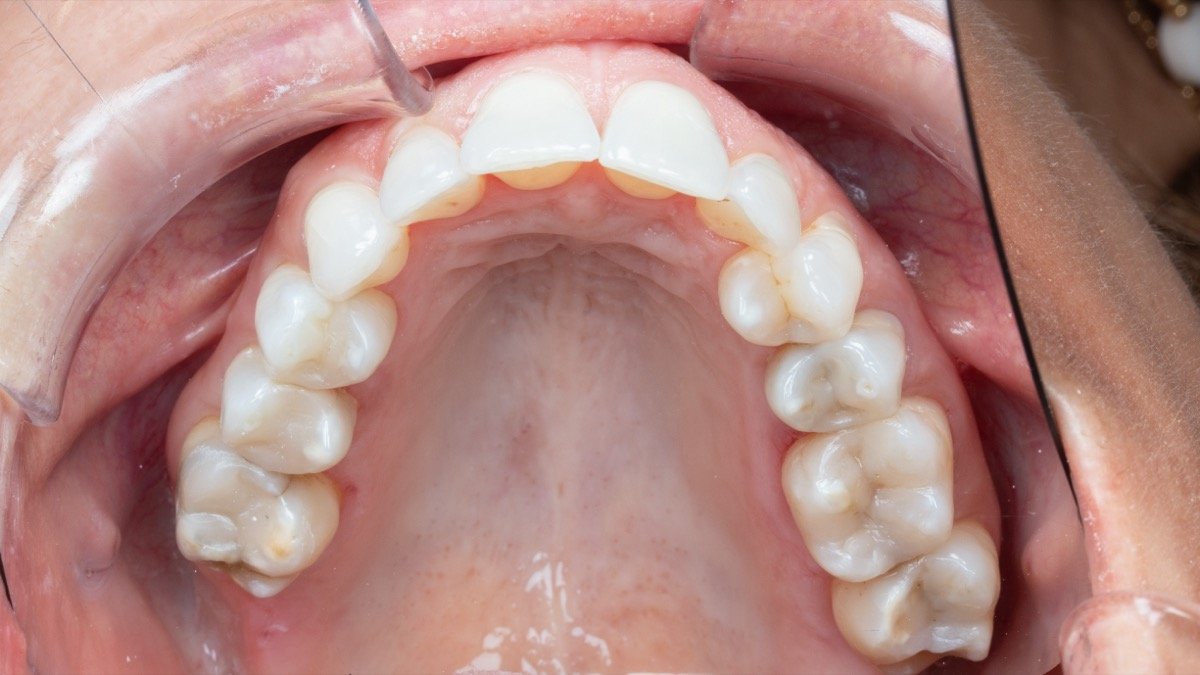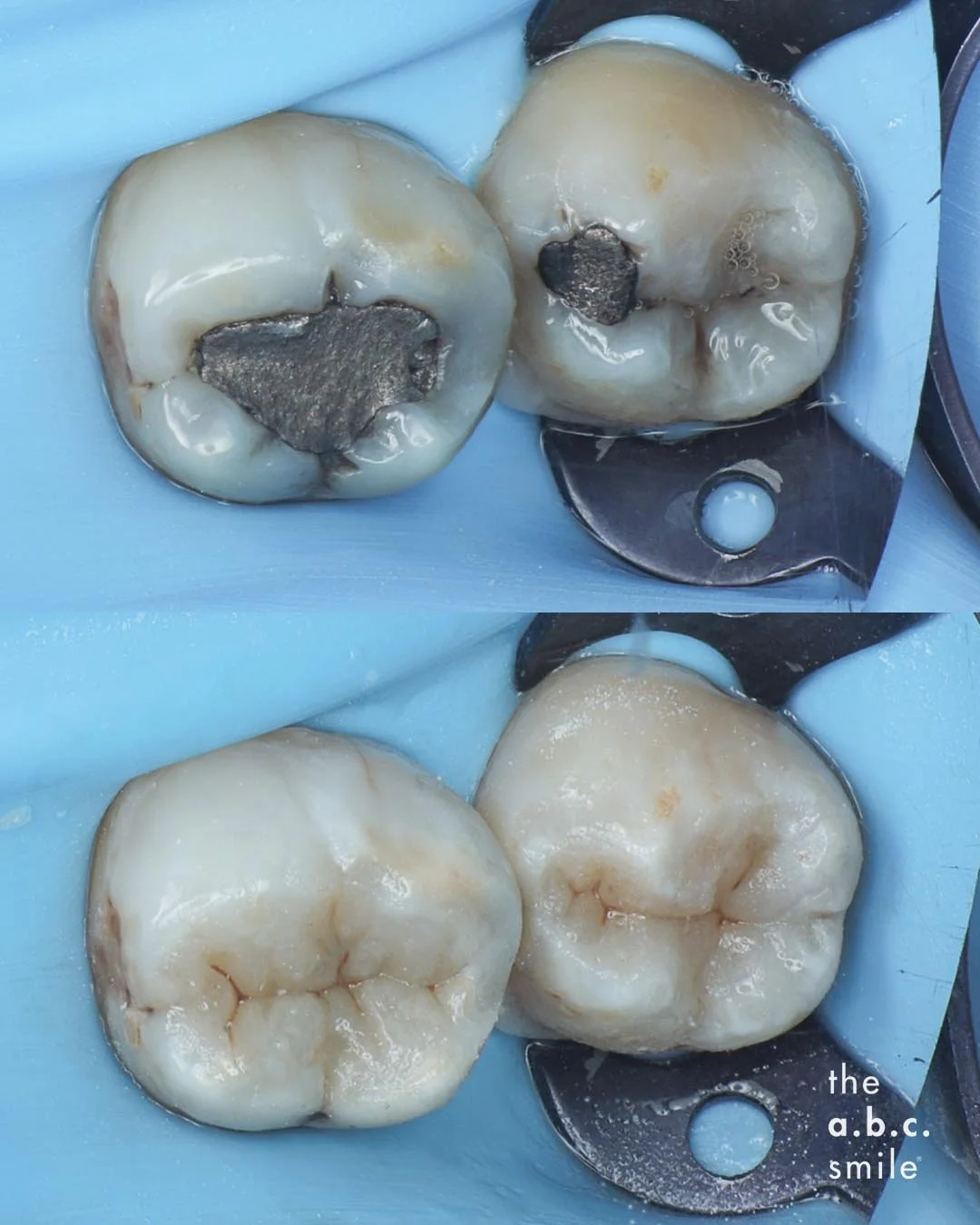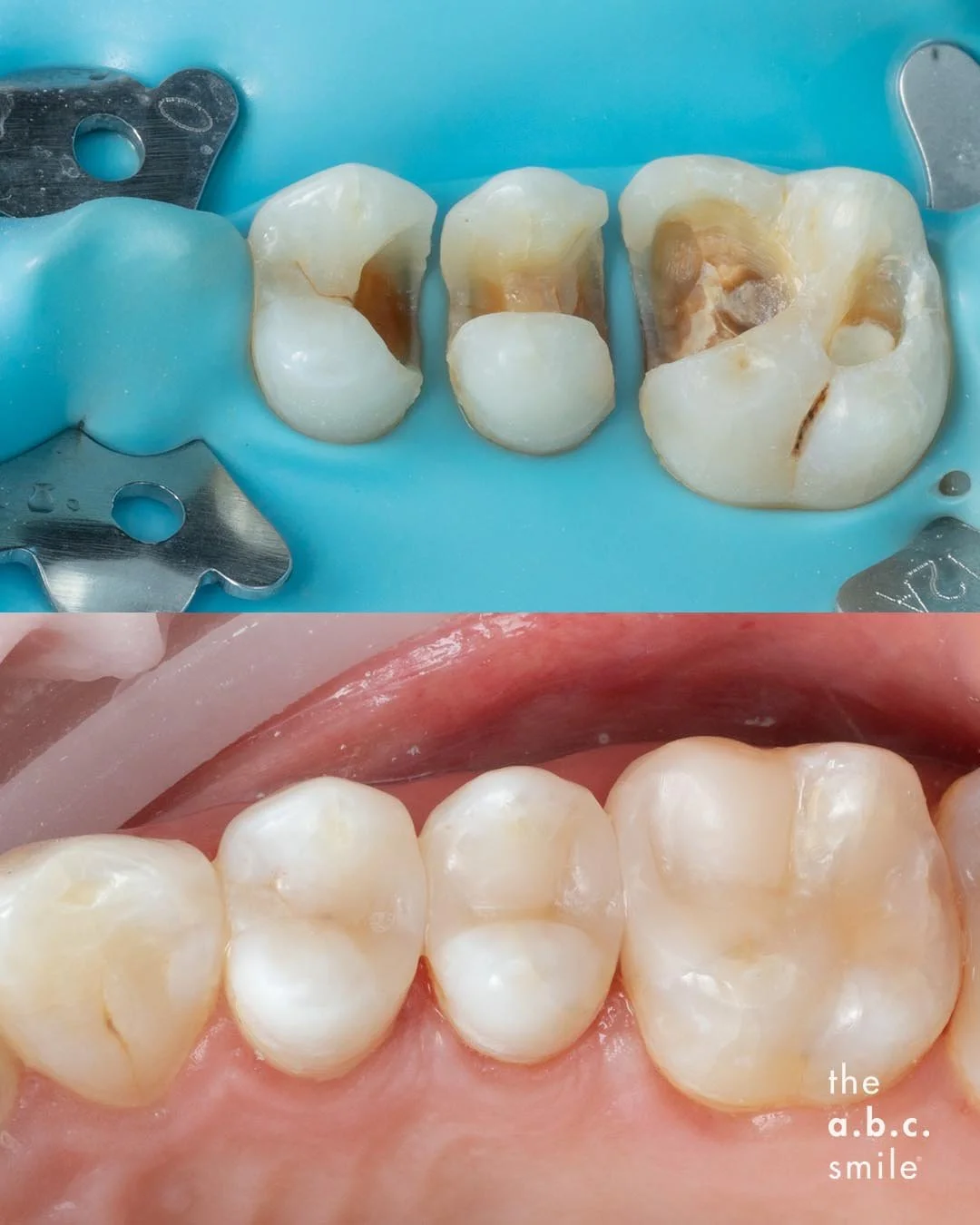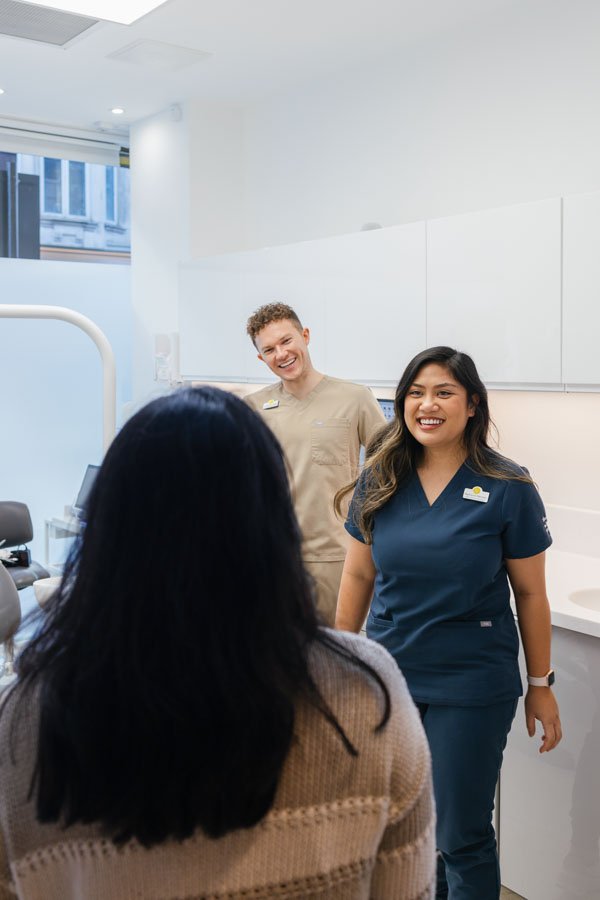restore posterior teeth
Direct Composite
Porcelain Onlay
FAQs
What is Composite Resin?
Contemporary composite resins have advanced beyond cavity restoration to reshape and refine anterior teeth without removing natural enamel. Composed of 75–80% glass and ceramic particles, the resin matrix acts as a scaffold, bonding these materials for strength, durability, and aesthetics.
What is Porcelain?
Porcelain, in most of our cases Lithium Disilicate (e.max), remains the material most closely resembling natural enamel in both appearance and strength. Ideal for large restorations, following root canal treatments and replacing old dentistry, it offers unmatched versatility, durability and long-lasting results.
Is this the same as a White Filling?
While ‘white fillings’ is a common term, we prefer ‘composite restorations’ to reflect our precise approach. Using specialised formulations of composite resin, we layer multiple materials to restore both the form and function of natural teeth with precision and artistry. This biomimetic approach is what separates a ‘filling’ from a true restoration of a tooth.
What is an Onlay?
The modern evolution of the traditional ‘crown.’ Previously, restoring heavily damaged teeth involved metal or metal-porcelain crowns, requiring extensive cutting of teeth to then protect. With contemporary bonding techniques and porcelain, we now craft hat-like porcelain restorations that bond over the tooth. It preserves the natural tooth while providing strength and aesthetics with minimal preparation.
Why are metal fillings being replacing?
Amalgam metal fillings were first introduced in 1826 and gained widespread use throughout the 1900s. Advances in material science have since transformed modern dentistry, offering safer and more aesthetic materials. While amalgam fillings often remain intact, the surrounding tooth structure is prone to cracking and fracturing as the material is not bonded to teeth.
Direct Composite vs. Porcelain Onlay
Composite Resin is the preferred solution for restoring teeth with cavities or replacing small-to-moderate amalgam fillings. For larger volumes, cracks and fractures or following a Root Canal Treatment, Porcelain offers greater strength and longevity, making it the optimal choice for durability and low-maintenance care for years to come.























